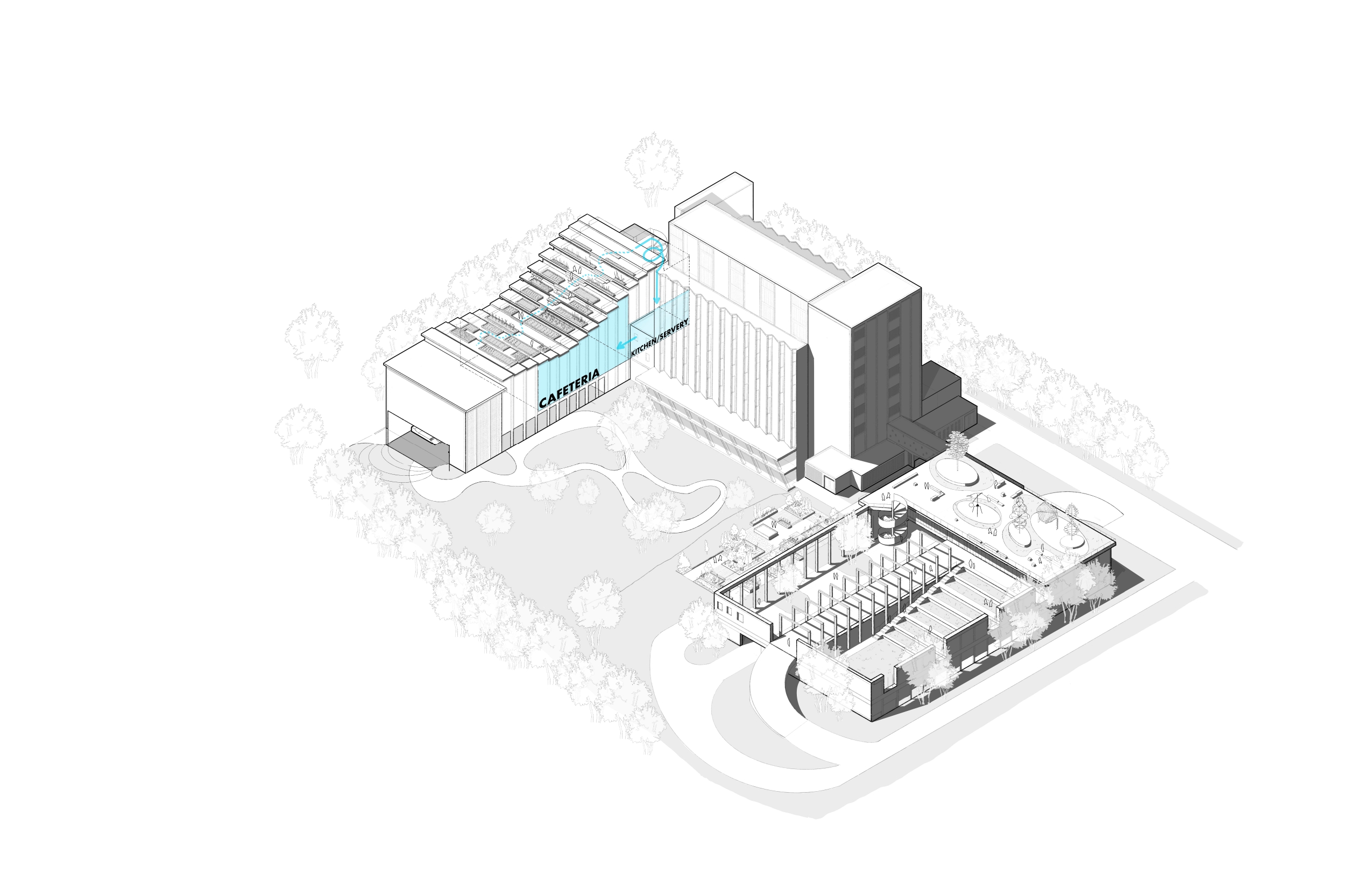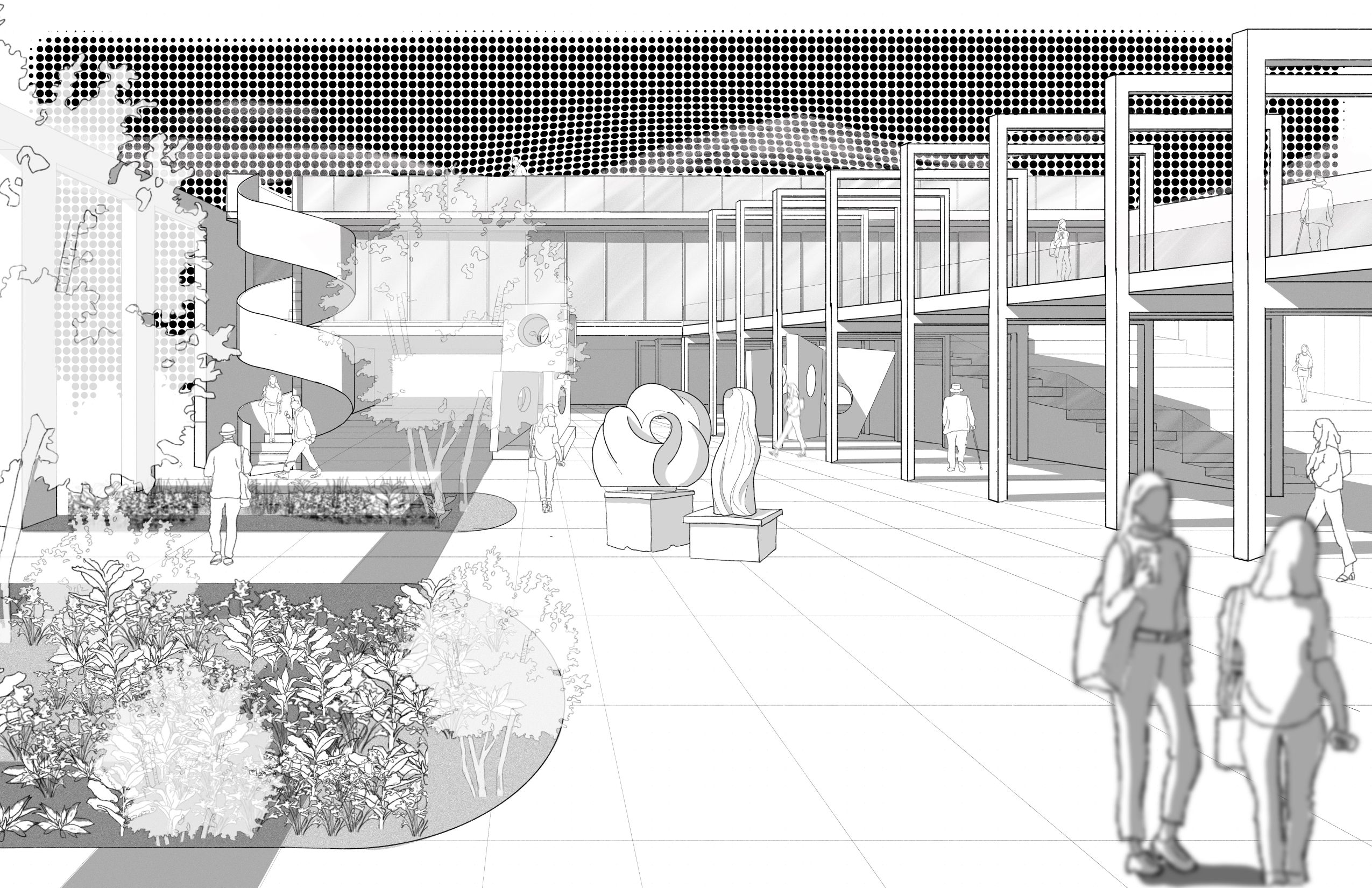MASTER OF ARCHITECTURE
Emma Chudoba— RAIC Honour Roll
![]()
Emma Chudoba— RAIC Honour Roll

About the Award
RAIC Honour Roll:
For those students who have achieved high academic standing in the top 10% of their graduating class.
Memory of The Future: Heritage of The Recent Past and Its Conservation
This thesis explores the conservation of heritage of the recent past, which, despite lacking the traditional age-value typically associated with historical significance, possesses both tangible and intangible qualities that require alternative evaluation and preservation methods. Buildings from 1950 to 1970, especially those of the modern movement, often do not conform to conventional conservation principles, leading to their undervaluation and potential neglect. These structures, more susceptible to the effects of time than their predecessors, face significant conservation challenges. To address this, the thesis proposes a novel methodology for assessing the significance of mid-twentieth-century architecture, emphasizing a comprehensive evaluation of all forms of value.
The traditional approach to preserving buildings often centers on simply retaining the structure while making cosmetic improvements to prevent it from appearing run-down. This perspective, while practical, can limit the potential of a building to evolve and meet contemporary needs. A more radical, adaptive reuse approach opens up a wealth of opportunities for innovation and relevance. The radical approach to heritage preservation expressed through the reimagining of the City Adult Learning Centre as a dynamic, community-centered space that both respects and reinvents its architectural past.
Understanding the qualities that distinguish modernism from preceding historical periods enables these buildings to convey a value that extends beyond the appreciation of age, patina, and wear. Their significance lies in their capacity to express the patterns of everyday life in a period increasingly distinct from the world we inhabit today.
The methodology outlined in this thesis operates on three levels: broad conceptual exploration, localized assessment, and practical application across various typologies. At a broad level, this involves developing a charter that identifies the distinct qualities that make heritage of the recent past a unique case within heritage discourse. These qualities include its rejection of age-value, its inherently anti-historical nature, and its ability to be deconstructed while still retaining memory and identity. Additionally, authenticity in this context is not tied to original, untouched
materials but rather to the broader conceptual and design intentions. Unlike older heritage, modern buildings exist within living memory, offering a rare opportunity for in-depth understanding—providing direct insights into their purpose, construction process, material choices, and long-term maintenance expectations. Case studies, one being the City Adult Learning Centre, are then used as a practical application to explore reinterpretation through the four key strategies: architectural adaptation, artifact preservation, landscape integration, and sculptural intervention.
Ultimately, this thesis underscores the urgent need to recognize and protect heritage from the recent past, advocating for a proactive and adaptive approach that challenges conventional preservation methods. By acknowledging the cultural and architectural significance of these buildings—many of which embody innovation, optimism, and a distinct break from historical traditions—we can develop a more comprehensive framework for safeguarding them before they are irreversibly lost to demolition.
RAIC Honour Roll:
For those students who have achieved high academic standing in the top 10% of their graduating class.
Memory of The Future: Heritage of The Recent Past and Its Conservation
This thesis explores the conservation of heritage of the recent past, which, despite lacking the traditional age-value typically associated with historical significance, possesses both tangible and intangible qualities that require alternative evaluation and preservation methods. Buildings from 1950 to 1970, especially those of the modern movement, often do not conform to conventional conservation principles, leading to their undervaluation and potential neglect. These structures, more susceptible to the effects of time than their predecessors, face significant conservation challenges. To address this, the thesis proposes a novel methodology for assessing the significance of mid-twentieth-century architecture, emphasizing a comprehensive evaluation of all forms of value.
The traditional approach to preserving buildings often centers on simply retaining the structure while making cosmetic improvements to prevent it from appearing run-down. This perspective, while practical, can limit the potential of a building to evolve and meet contemporary needs. A more radical, adaptive reuse approach opens up a wealth of opportunities for innovation and relevance. The radical approach to heritage preservation expressed through the reimagining of the City Adult Learning Centre as a dynamic, community-centered space that both respects and reinvents its architectural past.
Understanding the qualities that distinguish modernism from preceding historical periods enables these buildings to convey a value that extends beyond the appreciation of age, patina, and wear. Their significance lies in their capacity to express the patterns of everyday life in a period increasingly distinct from the world we inhabit today.
The methodology outlined in this thesis operates on three levels: broad conceptual exploration, localized assessment, and practical application across various typologies. At a broad level, this involves developing a charter that identifies the distinct qualities that make heritage of the recent past a unique case within heritage discourse. These qualities include its rejection of age-value, its inherently anti-historical nature, and its ability to be deconstructed while still retaining memory and identity. Additionally, authenticity in this context is not tied to original, untouched
materials but rather to the broader conceptual and design intentions. Unlike older heritage, modern buildings exist within living memory, offering a rare opportunity for in-depth understanding—providing direct insights into their purpose, construction process, material choices, and long-term maintenance expectations. Case studies, one being the City Adult Learning Centre, are then used as a practical application to explore reinterpretation through the four key strategies: architectural adaptation, artifact preservation, landscape integration, and sculptural intervention.
Ultimately, this thesis underscores the urgent need to recognize and protect heritage from the recent past, advocating for a proactive and adaptive approach that challenges conventional preservation methods. By acknowledging the cultural and architectural significance of these buildings—many of which embody innovation, optimism, and a distinct break from historical traditions—we can develop a more comprehensive framework for safeguarding them before they are irreversibly lost to demolition.



